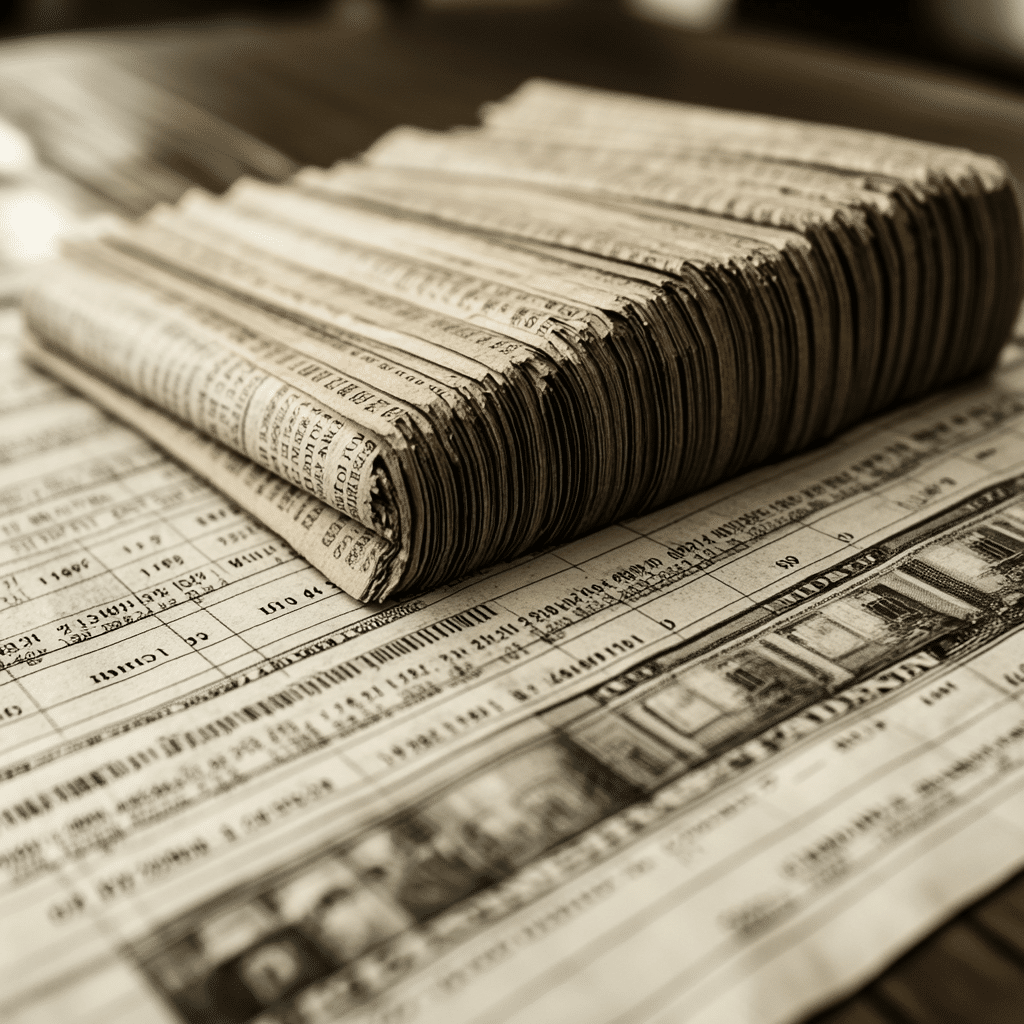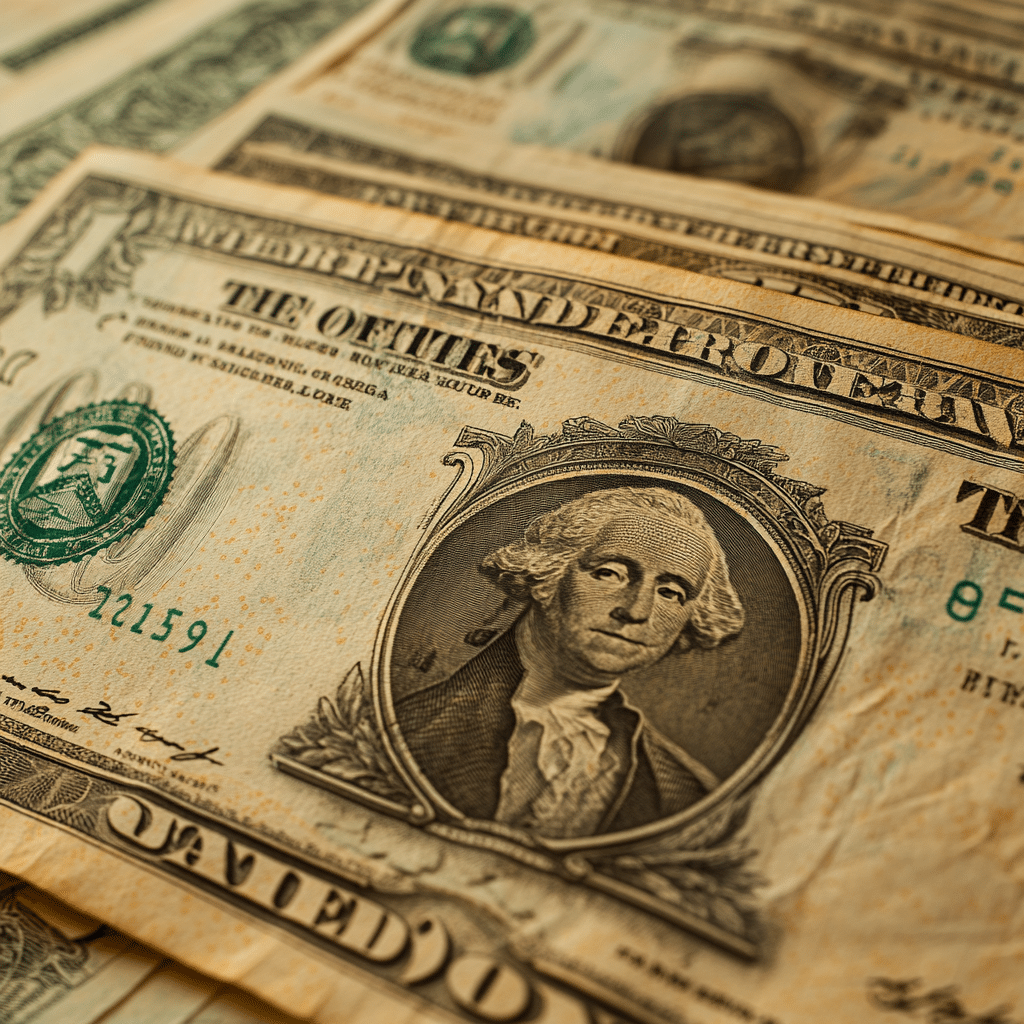Understanding the journey of Federal Reserve interest rates unveils the nuanced strategies behind controlling economic stability and growth. The evolution of the Fed interest rate history has been marked by significant decisions that have drastically influenced the economy. This article delves into the comprehensive past of the Federal Reserve’s rate decisions, outlining their significant impacts and trends.

The Evolution of Fed Interest Rate History
Pre-1970s: The Genesis of Fed Fund Rate History
The tale of the Federal Reserve’s interest rates begins with its establishment in 1913. In those early years, rate decisions were sporadic, driven by immediate economic conditions without a structured approach. For instance, during the Great Depression and World War II, the Fed maintained low rates to fuel growth amidst economic upheaval. However, the absence of standard policies led to irregular outcomes, contributing to a somewhat erratic financial landscape.
The Stagflation Era (1970s): Crisis in Federal Reserve Rate History
The 1970s presented one of the most turbulent times in US interest rate history, characterized by stagflation—a blend of stagnant economic growth and high inflation. Under Chairman Paul Volcker, the Federal Reserve increased rates aggressively in the late 1970s and early 1980s, with rates peaking near 20%. These historical Fed funds rates were critical in reigning in inflation, albeit precipitating a severe recession.
The Great Moderation (1980s-2007): Optimism in Fed Interest Rate History
From the mid-1980s through 2007, the period widely recognized as the Great Moderation saw comparatively stable economic growth and inflation control. The Fed rate chart during this era showcases deliberate rate modifications aimed at promoting steady economic progression. The leadership of Alan Greenspan was instrumental, focusing on avoiding both runaway inflation and significant recessions through careful rate management.
The 2008 Financial Crisis: Turning Point in Federal Interest Rate Chart
The 2008 collapse of Lehman Brothers triggered a global financial crisis, marking a critical juncture in federal reserve rate history. Faced with unprecedented economic turmoil, the Federal Reserve slashed the federal funds rate to near-zero levels. These historical Fed interest rates adjustments were pivotal in stimulating borrowing, maintaining liquidity, and reviving economic activities during one of the darkest times in U.S. interest rate history.
Post-Recession (2009-2019): Recovery in Federal Funds Rate History
Emerging from the recession’s shadows, the Fed embarked on a gradual normalization path. The late 2010s, a careful phase in fed rates history, witnessed steady rate hikes to prevent inflation while bolstering recovery. Janet Yellen and later Jerome Powell drove this phase, as depicted in the federal interest rate chart of those years.
The COVID-19 Pandemic: An Unprecedented Challenge in Historical Fed Funds Rate
The COVID-19 pandemic in 2020 forced the Federal Reserve into quick, decisive action. Fed fund rate history was marked by a swift return to near-zero interest rates to cushion the economic blow. The Fed’s measures included unprecedented asset purchases and enhanced liquidity injections, establishing a noteworthy chapter in US interest rate history.
Current Trends (2022-2024): Modern Dynamics in Federal Reserve Interest Rate History
As of 2024, the Federal Reserve’s strategy is a delicate balancing act amid post-pandemic realities and inflationary concerns. The evolving federal reserve rate history shows watchful adjustments to sustain economic stability. Innovations in financial technology and a dynamic global landscape also influence modern-day Fed rate decisions, emphasizing the Fed’s cautious approach to managing the economy.

The Influential Factors behind Historical Fed Interest Rates
Navigating the complexity of the Fed rate history involves understanding the myriad factors that guide the Federal Reserve’s interest rate decisions.
Economic Indicators: Core Elements in Federal Rate History
Key economic data such as GDP growth, unemployment rates, and inflation figures are critical in shaping the Fed’s rate decisions. For example, the early 1980s saw historical Fed interest rates spiked primarily to combat hyperinflation. Conversely, after the 2008 financial crisis, the focus shifted to promoting economic recovery, reflected in near-zero interest rates.
Federal Reserve Chairmen: Gatekeepers of US Interest Rate History
The influence of Fed Chairmen on interest rate history is profound. Figures like Paul Volcker, Alan Greenspan, Ben Bernanke, Janet Yellen, and Jerome Powell each brought unique policies addressing diverse economic challenges. Their strategies are etched in the pivotal moments on the federal interest rate chart.
Global Events: External Shocks in Fed Funds Rate History
Major global events significantly impact Fed’s rate decisions. The 1970s oil embargo led to soaring inflation and respective rate hikes. Similarly, the 2008 financial crisis and the COVID-19 pandemic heavily influenced the Fed’s actions, drastically altering Fed funds rate history.
| Year | Federal Funds Rate (%) | Key Events | Economic Implications |
| 2000 | 6.50 | Dot-com bubble peak | High rates aiming to cool down an overheated economy |
| 2001 | 1.75 | 9/11 attacks and recession | Decreased rates to stimulate economic recovery |
| 2004 | 1.00 | End of recession | Kept rates low to support gradual economic recovery |
| 2006 | 5.25 | Rising housing market concerns | Increased rates to counteract housing bubble and inflation |
| 2008 | 0.25 | Global financial crisis | Significant rate cuts to support the economy |
| 2015 | 0.50 | Economic stabilization | First rate hike after nearly a decade of near-zero rates |
| 2017 | 1.50 – 1.75 | Gradual rate hikes | Economic growth and low unemployment |
| 2019 | 1.75 | Economic softness and trade tensions | Rate cuts to cushion against potential downturns |
| 2020 | 0.00 – 0.25 | COVID-19 pandemic | Emergency rate cuts to support economic activity |
| 2022 | 0.25 | Economic recovery post-pandemic | Initial rate adjustments for a recovering economy |
| Feature | Benefit | ||
| Historical context | Understand economic responses to various key events | ||
| Interest rate adjustments | Insight into Fed’s measures to control inflation | ||
| Economic implications outlined | Clarity on how rate changes influence broader economy | ||
| Timeline of significant changes | Easy reference to key periods and rate shifts | ||
| Simplified data presentation | Quick grasp of complex historical data |
Unique Perspectives: Reflecting on Federal Reserve Rate History
Reflecting on the federal reserve interest rate history offers essential insights for the future. Understanding past trends helps economists and policymakers to better predict and mitigate future economic challenges.
The Role of Technology in Shaping Future Fed Rate History
Advanced data analytics and financial technologies are furnishing the Federal Reserve with new tools for more precise and proactive rate adjustments. These innovations promise to reshape the trajectory of federal interest rate history, potentially leading to more refined and responsive monetary policies.
Global Interconnectivity: A New Dimension in Fed Rate Decisions
As the global economy becomes more interconnected, Fed rate decisions are increasingly influenced by international economic conditions. The interplay between traditional US interest rate history and global economic trends requires a broader understanding of how these elements converge to inform future Fed rate history.
Envisioning the Future of Federal Interest Rate History
Reflecting on the dramatic shifts in past Fed interest rate history provides critical foresight for future economic stability. The Federal Reserve’s adaptive strategies amidst varying economic challenges underscore the importance of proactive and informed rate-setting policies. By studying the past, we can better equip ourselves to face future economic uncertainties with confidence and resilience.
Understanding the history of the Federal Reserve’s interest rates offers valuable lessons, enabling both policymakers and the public to be better prepared for the economic headwinds ahead. Engaging with this complex yet fascinating topic can illuminate the strategies that have shaped our financial world, and how they might continue to evolve.
By the way, if you’re curious about current Fed policies or looking into current fed fund rate changes and their implications, Mortgage Rater offers in-depth analyses that can guide your financial decisions. Dive into the details and stay informed!
Fed Interest Rate History: Dramatic Shifts Unveiled
When you dive into the Fed interest rate history, you might be surprised by some of the twists and turns. Over the decades, the rate changes have been influenced by a mix of economic conditions, policy decisions, and even unforeseen events. For example, did you know that in the early 1980s, interest rates soared to nearly 20% to combat inflation? This was a peak moment, and those high rates significantly affected everything from home loans to savings accounts.
The Rollercoaster of Rates
One interesting bit of knowledge involves how the Federal Reserve sets the federal funds rate, the foundation on which broader interest rate decisions rest. You can discover more about What Is federal funds rate and how it’s used to stabilize the economy. Over the years, as the economy grows or faces downturns, the Fed adjusts the rate to either encourage spending with lower rates or control inflation with higher ones. As unpredictable as a Maryland beach weather, Fed interest rate history shows an economy in flux not unlike the hospitality industry’s response to changing tourist trends at Resorts in Maryland.
Unusual Connections and Surprising Facts
Sometimes, the impact of fed interest rates stretches out in unexpected ways. For instance, the rise and fall of stated income Loans have also been swayed by these rates. Learn more about the ups and downs of stated income loans, which became popular during certain economic periods thanks to the federal rate’s influence on market behavior. Ironically, just like a character from an anime show, say Ai Ohto, navigating strange and unexpected twists, the federal funds rate has similarly charted a path full of surprises and dramatic shifts.
As you continue to explore the untold stories behind the Fed interest rate history, remember that these numbers have a profound impact on the broader economic landscape and personal finances alike. Whether it’s influencing mortgage rates, savings accounts, or the Challenges faced by Individuals like The complex identity navigation Seen in Indian lesbian Communities, the Fed’s decisions ripple far and wide. Keeps your curiosity engaged and stay informed about how these monetary policies shape the economic journey ahead.




